With one click download for free our sweet ebook!
Αpril 2 is International Children’s Book Day and since everyone currently has more free time at home, we thought that it is a nice opportunity to talk about children’s books. Children’s books aren’t just for kids; when they are of good quality, we believe that they have something to offer to everyone!
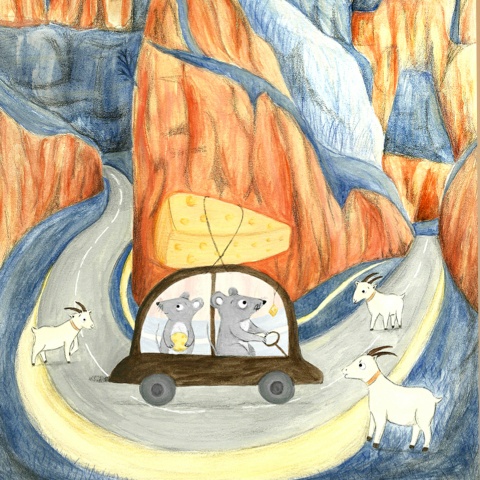
So, with children or without, let’s plunge for a while into the sweet, imaginary world of children’s literature. In our new article, dedicated to children’s literature, you will read a personal memory that will make you laugh, sweet thoughts on the value of children’s books and useful information about the various genres of children’s books.

In an older article, which included a lot of literature excerpts so we didn’t attempt to translate it, we talked about a good teacher I was blessed and lucky to have had. My teacher, except for being an educator, was also the awarded Greek children’s books writer Ms. Foteini Fragouli.

In a school commemorative album that Ms. Foteini once made for her students, she wrote something about each child, to remember him by. My phrase said that she would remember me by my love for books. I felt jealous of the other kids, whom she would remember for their humour, joy, imagination… I couldn’t then understand that books have all that! So, we will dedicate every article concerning books and literature to Ms. Foteini, and we are sure that if she was still with us, we would have a lot to say about all that…

In Christian Poslaniek’s book Donner le goût de lire (1990) which means “let’s give (children) the will to read” we found some advice on how to manage that. Suggest a wide variety of books to choose from, pick books that trigger their imagination -informational books can also do that, avoid pressuring children to read or defining the book’s meaning for them, on the contrary help them discover their own motives to read and make their own interpretations about their readings. All this means making children active readers, as long as we ourselves have become ones at first of course!

When choosing books for children we must pay attention, as there is a plethora of children’s books on the market, which aren’t all suitable and beneficial to children, especially at a young age. According to philologist M. Chourpouliadou, young children are interested in their close environment, family, friends, home, and they can relate to such stories. Also, children like verses and funny words! They prefer fantasy heroes, and bright and shiny colours. And the most important is that if we want to read a book to children, we must enjoy it ourselves too!

So, starting with the first of Poslaniek’s advice, we will look into the various genres of books for children -and not only!
The International Children’s Book Day was established in 1967 by the International Board on Books for Young People to honour the great fairytales’ writer Hans Christian Andersen. Are all children’s books fairytales though? Lots of them are indeed illustrated fairytales and short stories. A short definition for the fairytale we found in an article by theologist-philologist Dr. Eirini Artemi is that a fairytale is an oral narration of imaginary events starring heroes, princes, kings, princesses, dragons, elves, talking animals, magical objects…


(illustration: Chuck Whelon)
All the countries of the world have folk tales. Ιn a master’s paper we read that contemporary Greek fairytales get inspired by Greek folk tradition and other countries’ folk tales too. However, international fairytales are very popular in Greece, taking into account the contribution of their TV and cinema adaptations.

A king suffering from anorexia and satisfied by nothing, discovers the “sweetest bread” when he follows a wise old man’s advice and works himself for three days in the field to prepare it!
Mythology is another genre loved by kids in every epoch and part of the world. As professor of the National and Kapodistrian University of Athens Ms. Angela Yannicopoulou states in her book To eikonografimeno vivlio stin proscholiki ekpaideysi (2016) (meaning “the illustrated book in preschool education”) today in Greece, and worldwide too, myths are alive everywhere. On the other hand, Greek mythology is also a way to learn Ancient Greek history and Ancient Greek values. Children like playful and pleasant activities. One such example, according to Ms. Yannicopoulou, can be the observation of mythological elements appearing in Hollywood movies, animations, artworks, with new forms and meanings.
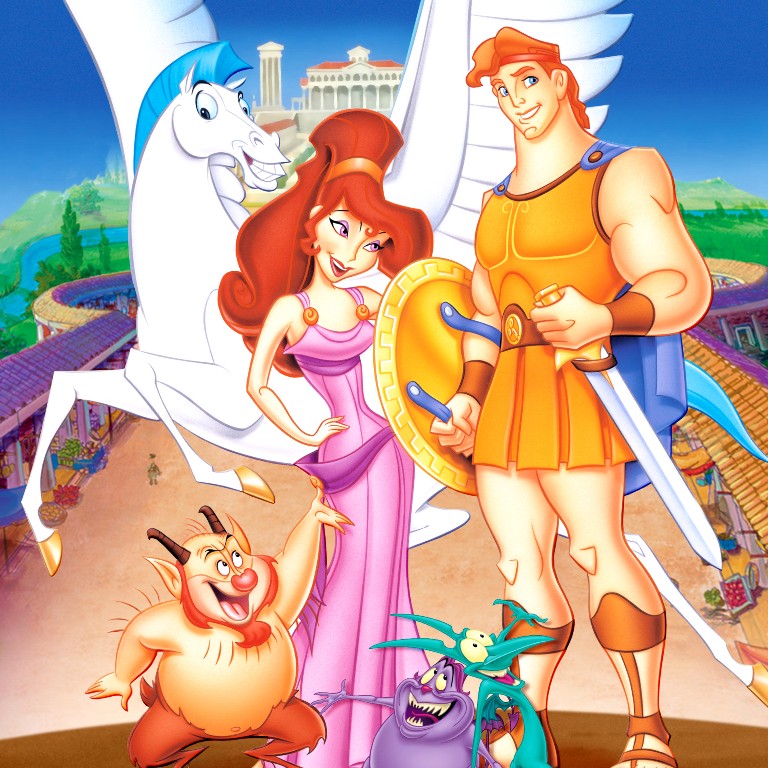
Illustration is one of the basic components of a children’s book. Images make a first good or bad impression, and also during reading images can give us the opportunity to make our own assumptions and give our personal interpretations to the story. A good children’s book with beautiful illustrations can motivate both kids and adults to discuss more and express their thoughts and feelings. We don’t need to read the whole book to children at once, but we can talk about what they see in the pictures, stopping at selected pages, what they suppose is happening, how they imagine the heroes’ feelings and desires and many other subjects that may come to our minds or to the kids’ minds as well.
Books with open endings are very suitable for such discussions. These are stories that don’t have the ending we expect, and they lived happily ever after or whichever ending the write choses to give. Here the book ends abruptly, without a final scene and the reader is called to continue and close the story on his own.

Children’s books, except from reading them of course, are also great material for various activities and games that are based on the story or some element of the book and give children the opportunity to approach the book in a playful and creative way. As usually happens with kids, such activities always bring laughter and joy!
A short, personal story

One such case is an activity I once did in a preschool of Athens’ city center. The activity was based on one of our favourite books: How to hide a lion from grandma (2014) by Helen Stephens, the second book of the trilogy starring the lion and Iris. The books narrate the adventures of the two friends, in which Iris is trying to hide the lion from various characters, who she thinks are afraid or don’t like lions at all. At the same time, various other unexpected things happen! These books belong to the genre of children’s books with open endings, in which when you reach the final page you don’t realize it’s the last page and when you turn it you are faced with the surprise that there is no more story!

At preschool, we read the book together with the children, who described the illustrations, made hypotheses about the action in the pictures, tried to get into the heroes’ shoes and guess how they felt, what they were thinking and what they wanted to do. Before turning to the next page, children tried to guess the continuation of the story. We must note that this preschool is situated in an underprivileged area of Athens and the children came from various countries. Nonetheless, they all participated in the reading of the book and the activity that followed with enthusiasm and joy.

After reading the book we talked about what could have happened next, since it was a book with an open ending, and then we created all together a floor game based on the book. The children made drawings on a large paper, the board of the floor game, each in its own box, where they painted their own version of the book’s ending. Among the various scenes, we picked one that surprised us and made us laugh a lot, as children usually do!
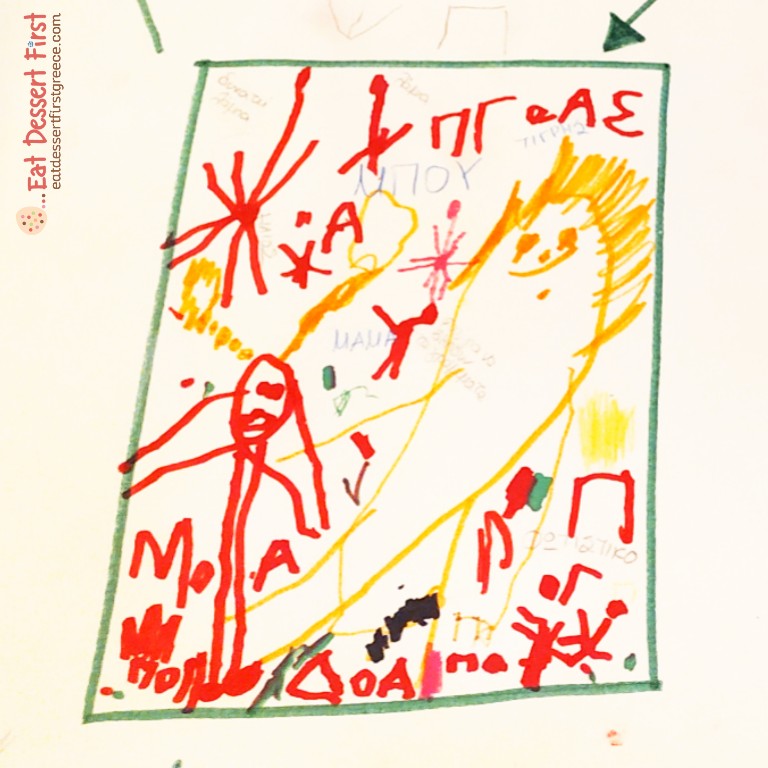
So, what is going on in this drawing? We won’t tell you the story, to avoid spoiling the end -even though open- of the book. We will only mention that the drawing shows the lion and Iris’ mother, obviously angry, since we see her ears on fire… But let’s start from the beginning…
Once upon a time, some children were making their drawings in order to create their collective floor game. I was sitting next to each child for a while, to discuss his/her drawing and write down what he/she would tell me. My goal was to write some words that on the one hand would help us remember what each one had created, and on the other help them develop their literacy, trying to read the words and write their own.

At some point I go near young P. and start asking him what each element of his drawing was, so that he would narrate the story he had drawn. At the moment the picture had only a lion and an angry mom. I wrote the words down and went away.
When I came back again I saw a red star on the picture, so I asked P. what this was. He answered that it was a lamp. “A lamp?” I wandered and he said “Yes, a lamp to light all those letters” meaning the words I had noted on his picture! My words had invaded his imaginary scene so realistically that he felt the need to illuminate them! And there is more… I once again wrote down some words to remember that he had drawn a lamp to light the words, so he was forced to make a larger lamp to light the additional words! I wrote it down again, since I didn’t quite realize the problem I was causing him, until I forced him to create a sun, to shed light on all that!
Speaking of the huge problem the invasion of words into the child’s picture had created, we will now move on to a book genre that has no words, out of choice. Wordless books are exactly what their name says, books that have no text, just images!
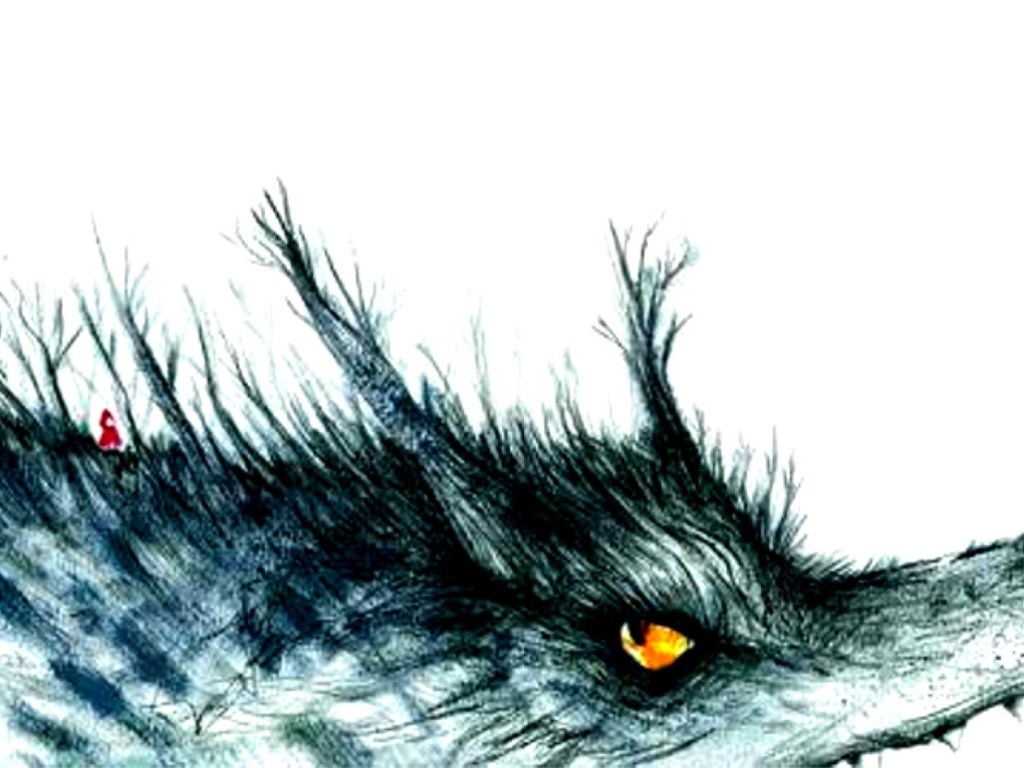
Therefore, each reader “reads” his own story, and the various readings that may occur from one book are literally infinite. Don’t think that reading a book with images only is childish and easy -we thought so too in the beginning! As professor Ms. Angela Yannicopoulou mentions, wordless books are a demanding genre, that is however suitable for all ages and equally satisfies both children an adults.
In the following clip you will see a wordless book, about an imaginary journey with an unexpected means that could be quite useful these days!
Since we find wordless books very interesting, we will look into them analytically in one of our next articles, so stay tuned!
Back to reality now… Another children’s books genre are novels for children, many of which are historical and social fiction. Very important Greek historical fiction writers are Penelope Delta and Zacharias Papantoniou. According to a conference speech by postdoctoral researcher Rozi Aggelaki, historical novels can become an alternative method for approaching historical knowledge at school -and at home we will add. Those kind of stories may be fictional, but they include realistic details about the epoch, the people, their behaviours and habits.

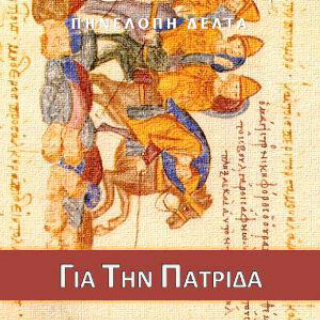
So, do children’s books exist at school? One would think that school books belong to the informational books genre. However, this term means something else. According to awarded Greek children’s books writer Marisa De Castro, informational books are books that enrich the knowledge children already have or answer specific questionings and inquiries. The recent subcategory of informational fiction books that combines literature and learning also belongs to this genre.

An interesting case of children’s literature at school is the novel of Greek writer Zacharias Papantoniou Ta psila vouna (The high mountains, you can read the book in English here). As we read in Ta Nea newspaper, it started as a school book in 1918. It was an innovative and progressive book written in Modern Greek language, which had just been established at the time as part of the educational reform of Eleftherios Venizelos. When it stopped being taught at school, the book continued to be read as children’s literature and was very much loved.
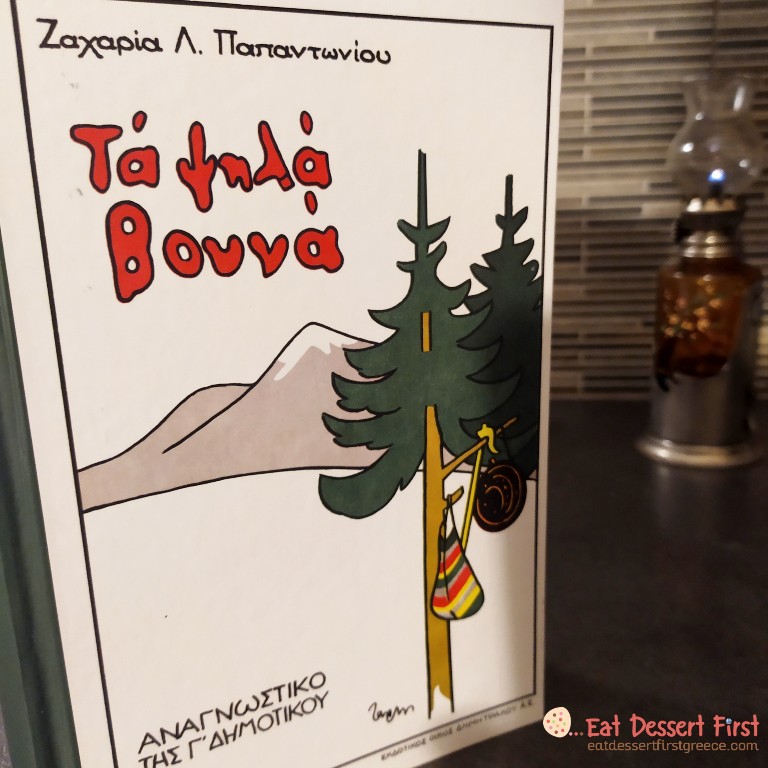
Very important are also Christian books for children. They are a way of resisting to the images that overwhelm children every day and a comprehensive means to approach Christian values and get inspired by good examples so that they preserve their childhood and innocence. In an article we found at the website of the Youth and Family Foundation of the Archbishopric of Athens we read that Christian parents, except for raising children that will become good citizens, have the additional difficulty of bringing up children that will be citizens of the kingdom of God. Christian books, with their beautiful stories and serene images can play a role in that!


Children’s poetry genre will help us close in a poetical way. Although this genre is not very developed in Greece, we have found many nice and sweet poems for children. In the Greek version of the article we cite a Greek poem about a world made out of sweets but since we won’t attempt translating poetry, we will cite an English similar one, chosen for obvious reasons of course…
Down with greens
I don’t like peas;
I don’t like beans;
I don’t like squash
or other greens.
Instead I’d like
some cake and pie,
a cone with ice cream
stacked sky-high.
It seems that when
you’re hungriest
you’d eat the foods
you like the best.
So pass the sprinkles,
if you please,
and pass the pie,
but keep your peas.
Barbara Vance

So, pick a nice book, sit comfortably in your couch and travel into its magical world… Have a nice read and stay healthy always!
Be the first one to read our new articles!
Follow us on our social media:
- Instagram: @eatdessertfirstgreece
- Facebook profile: Giorgos Eliza Vlachakis
- Facebook page: eatdessertfirstgreece
- Twitter: @eatdessert1stGr
- Pinterest: eatdessert1stGr
Follow us by submitting your email into the box you will find if you scroll down our page, so that you receive each new article by email as soon as it is online. Don’t forget to confirm your subscription, in the email you will receive! 🤗 For wordpress bloggers like ourselves, just press the follow button.


We only know April Fool’s Day but have no idea of International Children’s Book Day. In my childhood I read many adult books, no, not that kind of books on your mind, we did not have such books in our conservative society. We read books that were intended for educated adults.
LikeLike
Thank you very much for your comment, books are definitely a great educatioal means and a very entertaining one too!
LikeLike
Thanks for sharing such an interesting article. Really enjoyed the read. Such stunning illustrations. Have a great day. Stay Safe. Stay Smiling, Stay Laughing.
LikeLike
Thank you vey much for your great words! Hava a nice day too! Stay happy and safe!
LikeLiked by 1 person
Cheers. Happy Day.
LikeLike
Reblogged this on Art, Photography and Poetry.
LikeLike